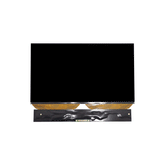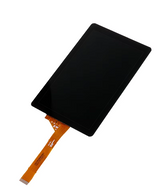3D Printing in Healthcare: Projected Market Growth to 2034
04 Jun 2024
0 Comments
On May 29, 2024, Xpiens reported that according to a recent market survey by Additive Manufacturing Research titled "Market Trends and Opportunities in Medical Devices: Prosthetics, Dental, and Hearing," the market for 3D printed medical devices is expected to grow from $4.5 billion in 2023 to $16.5 billion by 2034. This represents a compound annual growth rate (CAGR) of 12%, signaling a robust expansion in the next decade.

Revolutionary Changes Brought by 3D Printing to Traditional Medicine
Over the past two decades, 3D printing has not only improved patient outcomes but also made healthcare more accessible. In the dental sector, 3D printing facilitates the rapid, high-precision production of dental crowns, bridges, and dentures, even offering same-day services. Customized hearing aids and other auditory devices such as cochlear implants have become more precise and comfortable, enhancing the quality of life for those with hearing impairments. Additionally, surgeons now use 3D printed models and guides for pre-surgical planning, reducing errors and enhancing surgical outcomes.
During global supply chain crises, 3D printing has played a crucial role in addressing production challenges, streamlining supply chains, and bringing device design and production closer to patients and healthcare providers. The ability to quickly produce essential medical supplies like personal protective equipment (PPE) and ventilator parts has demonstrated the flexibility and speed of 3D printing technology.
Key Trends and Opportunities in the 3D Printed Medical Device Market
The report highlights that continuous innovation in specific 3D printing platforms, especially in the dental sector, is a major driver of market growth. These technological advancements have enhanced the precision and customization of medical devices, making them more effective and tailored to individual patient needs.Another significant trend is the digitization of healthcare and medical device supply chains. This shift has made production processes more efficient and responsive, crucial for maintaining the growth of 3D printing applications. By utilizing digital tools and technologies, the healthcare industry can streamline operations and improve patient care.

△3D printed medical implants developed by 3D Systems
Additionally, regulatory bodies such as the U.S. Food and Drug Administration (FDA) and the European Medicines Agency (EMA) are increasingly guiding the development of 3D printed medical devices. Regulatory progress is key to the wider acceptance and integration of 3D printed devices in healthcare. With clear guidance and support from these agencies, manufacturers can confidently develop and market innovative 3D printing solutions, ensuring their safety and effectiveness for patients.Detailed Insights and Forecasts from the Report
The report provides a detailed analysis of technology, materials, and services, helping stakeholders identify specific growth areas and opportunities within the evolving 3D printing ecosystem. It shows that services account for a significant portion of market revenue, followed by materials and hardware.From 2022 to 2034, the market revenue for 3D printed medical devices is expected to grow steadily, reaching $16.5 billion by 2034. This growth is primarily driven by different market segments, with services expected to contribute $11.5 billion, materials $3.7 billion, and hardware $1.3 billion. This growth trend underscores the increasing importance and application of 3D printing technology in the medical device industry.

The report also highlights major industry players, including 3D Systems, Formlabs, Stratasys, and Materialise. These companies are at the forefront of innovation, providing the necessary technologies and materials to drive the medical device industry forward.
As 3D printing technology continues to evolve, its applications in the medical device industry are expected to expand further. The report anticipates that ongoing advancements in 3D printing platforms, combined with regulatory support and digitized supply chains, will continue to propel market growth.
Tags:











Leave a comment
Please note, comments need to be approved before they are published.